Until April 2, 2017 in the Apothecary Garden on Prospekt Mira in Moscow as part of the festival " Tropical winter» The Winter Orchid Festival will continue.
More than a thousand blooming orchids located in a large Palm Greenhouse in the atmosphere of a tropical forest. Visitors will see the rarest Lady's slipper, Black Orchid, Devil's Flower, unique collection miniature orchids and new varieties of breeding plants.
For this exhibition, interesting specimens were selected from an iconographic point of view, whose accurate depiction of the document is the scientific aspect of the correct recognition of individual medicinal plants in nature, as well as a variety of decorative techniques.
Between history, botany and science. Knowledge of the beneficial or harmful effects of plant substances present in the natural environment dates back to prehistoric times, but the failure to understand the mechanisms of healing often leads the first communities to imagine magical and supernatural interventions of a divine nature. This is the Greek civilization, around 500 BC. During the Renaissance, the "golden age" for herbalists, large exploratory trips to India and the Americas promoted scientific progress in the knowledge and use of medicinal plants.
“Tropical Winter” also showcases one of the country’s largest collections of cacti and succulents and an exhibition of insectivorous plants. Come admire the lunar cacti-lianas “Queen of the Night”, agaves, lithops - living stones, predatory Venus flytraps, sundews and other rarities.
In addition, guests of the Winter Orchid Festival will be able to visit the new Victor Conservatory with a large swimming pool and tropical water lilies growing there.
He understands that active principles can be extracted and isolated from plants to have greater healing effects. Paracelsus created a new discipline, iatrochemistry, which involves the treatment of diseases using minerals and chemicals: it is the ancestor of modern medicinal chemistry. With the creation of the first university departments of experimental botany in Padua and Bologna, there was a need to have samples of dried plants to teach students to recognize medicinal plants and drugs.
To create herbicides, “simple gardens” are re-emerging in Pisa, Padua and Florence. While the list of plants is growing stronger, new observational tools - such as the microscope and cooler - and developments in biochemistry are making it possible to recognize and isolate the active principles of medicinal plants based on the chemicals they contain. After another industrialization process, large European chemical industries emerged and synthetic drugs became commercial products. In recent decades, herbal medicine, which had been overshadowed by the proliferation of synthetic drugs, has been rediscovered, both as a complementary method to traditional therapy and as a gentle treatment with fewer contraindications and side effects.
For the first time this year, feeding and walking sessions for the iguana Iriska from the Zoological Museum of Moscow State University are being held on weekends.
How to get to the Aptekarsky Garden
By public transport: metro station Mira-ring. After exiting the metro, turn left and walk along Prospekt Mira for about 180 meters. Enter the glass doors of the dark green building (there will be a cafe on the left) and go through it.
So today, even more than once, tell your doctor, pharmacist, herbalist, they must have specific knowledge of not only pharmacological and toxicological tests, but also herbal types must be effectively used for medicinal purposes of plants, shrubs and flowers.
The tools used before the Middle Ages are empirical. First of all, the solution, in various sizes, shapes and materials, is the main tool of the pharmacy to reduce the amount of dust so that it becomes a symbol. Large solutions, spices, in which large quantities of substances are processed, are often accompanied by accessories that facilitate its use and are raised from the ground by a special and durable wooden support to facilitate the use of the pestle. To obtain particularly homogeneous and fine dust, porphyry solutions or other precisely ground hard stones are used.
Address: Mira Avenue, building 26, building 1
Opening hours
Every day, from 10-00 to 20-00, cash desk - until 19-30
Ticket prices
The price of the entrance ticket (includes a visit to the territory of the Vegetable Garden and the Orangery complex) is 200 rubles, a discounted ticket for schoolchildren, students and pensioners upon presentation of an ID is 150 rubles. Some categories of visitors are entitled to free admission.
While ancient bronze mortars of artistic value have been preserved, carefully crafted by skilled craftsmen and often dated, signed and luxuriously decorated, this herbal tool is still in use today. Spices have a place in the hearth and utensils, distillation apparatus, sieves, filters, fryers, pewter copper containers for containing, decanting and heating plant matter. The current growing demand for natural or personal products promotes the restoration of herbal preparation, supported by modern and efficient equipment aimed at producing herbal extracts for natural healing.
You can take photos for free.
Photos from the Orchid Festival 2016 in the Aptekarsky Garden
Alley of the Palm Greenhouse. It is very humid here - the camera lens instantly fogs up.
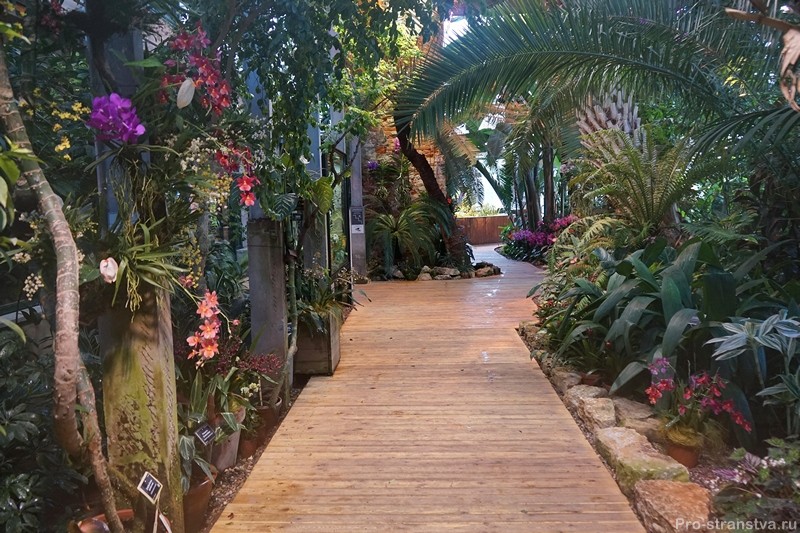
Orchids are located among the greenhouse plants, most of the flowers are equipped with nameplates.
Medicinal plants used in ancient medicine are almost always spontaneous, in a field or forest, and less often cultivated plants, a garden or garden are used. Man has always attributed the healing properties of the herbs, shrubs and trees growing in the environment as an expression of the vital and almost spiritual nature of nature. Even in ancient Egypt and among the peoples of Mesopotamia, written and iconographic sources indicate a deep knowledge of medicinal plants. All are used for "galenic drugs", compounds named after Galen of Pergamon.
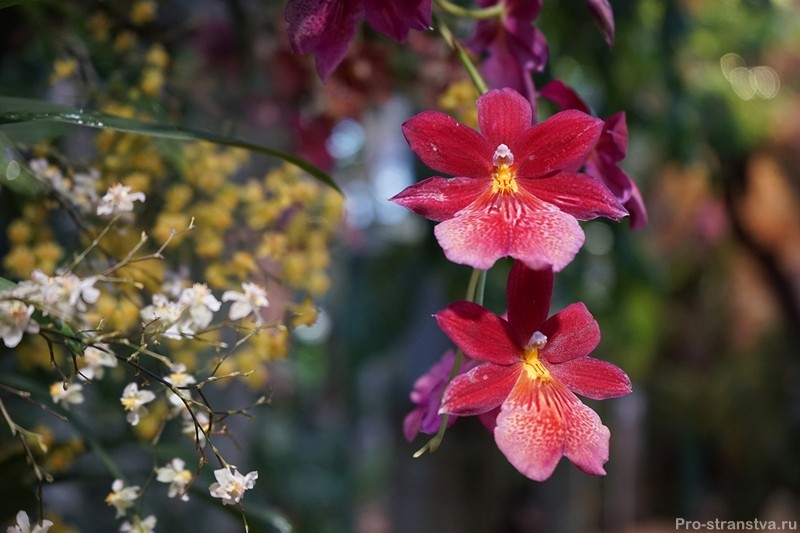
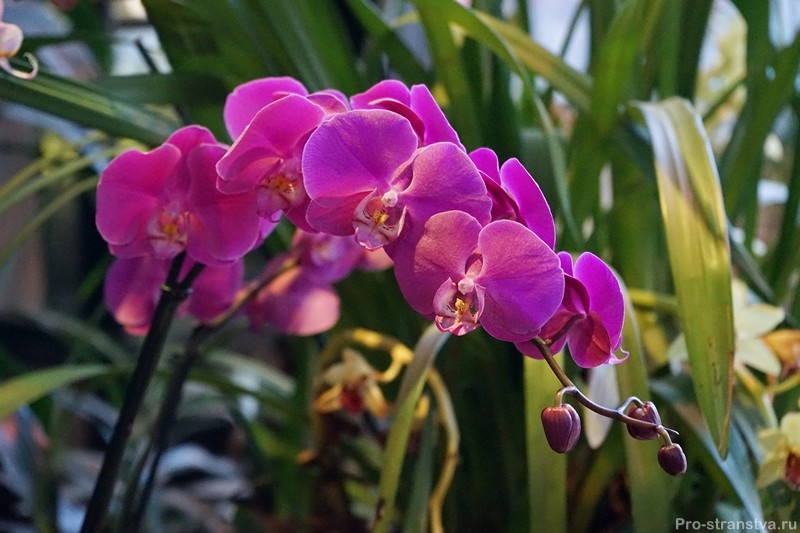
Rare exhibits are displayed in separate display cases. Orchid "Black Pearl".

"Venus' slipper" is one of the varieties.
![]()
Miniature flowers.

A few more photos of tropical beauties:

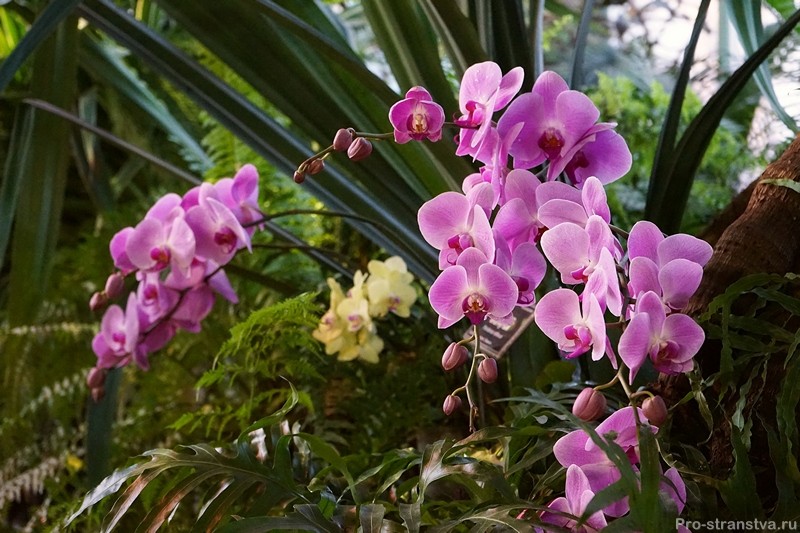

As part of the Tropical Winter festival, carnivorous plants are demonstrated in the Palm Greenhouse.
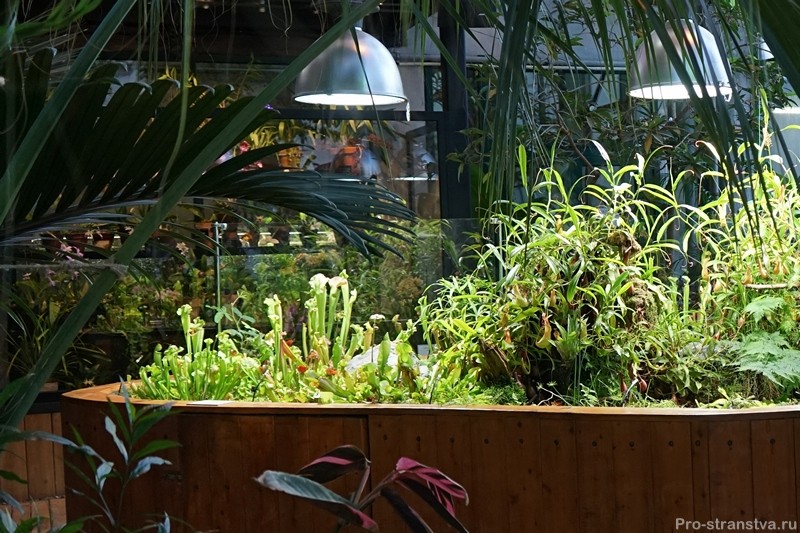
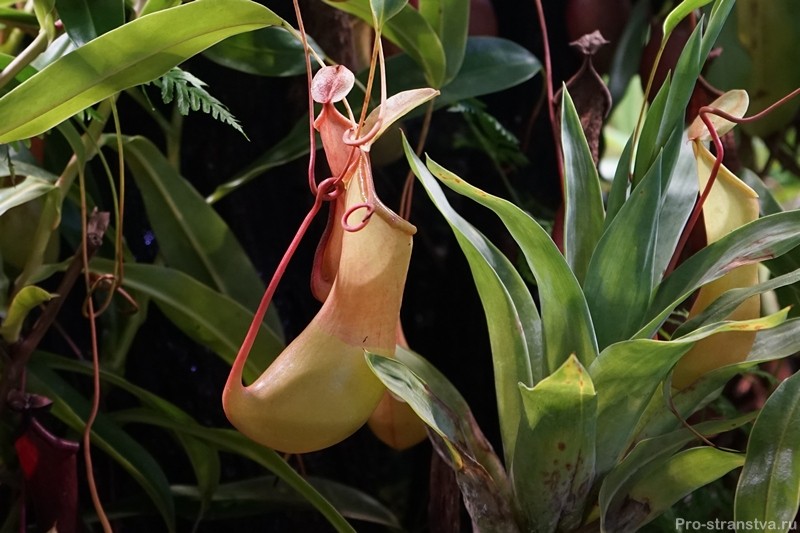
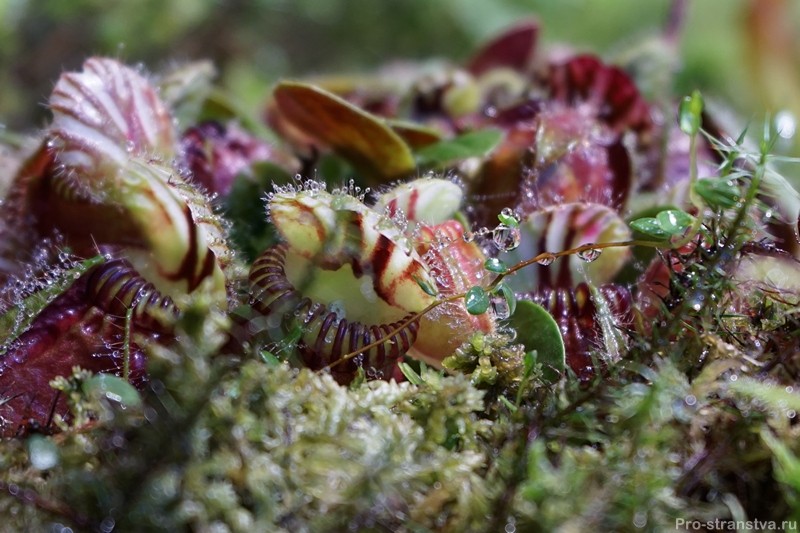
On the second floor there is a rich collection of cacti and succulents from the Apothecary Garden.
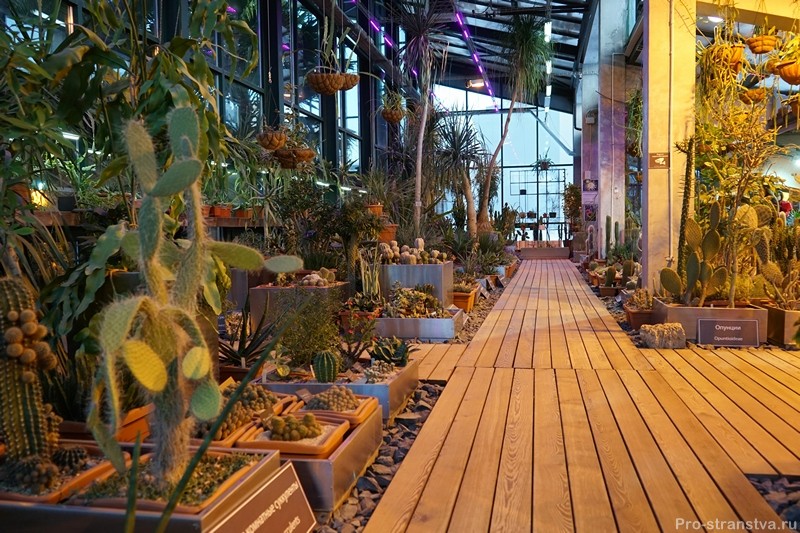
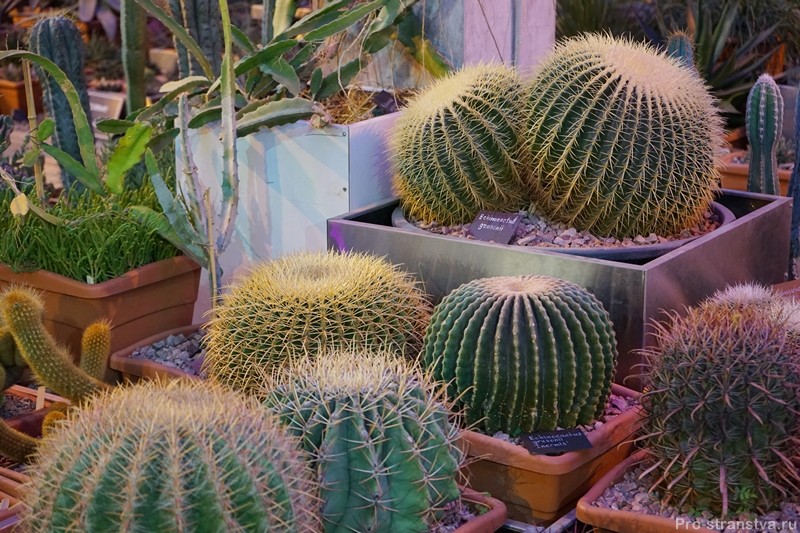
Copying text and photographs is prohibited! Materials are protected by copyright law.


